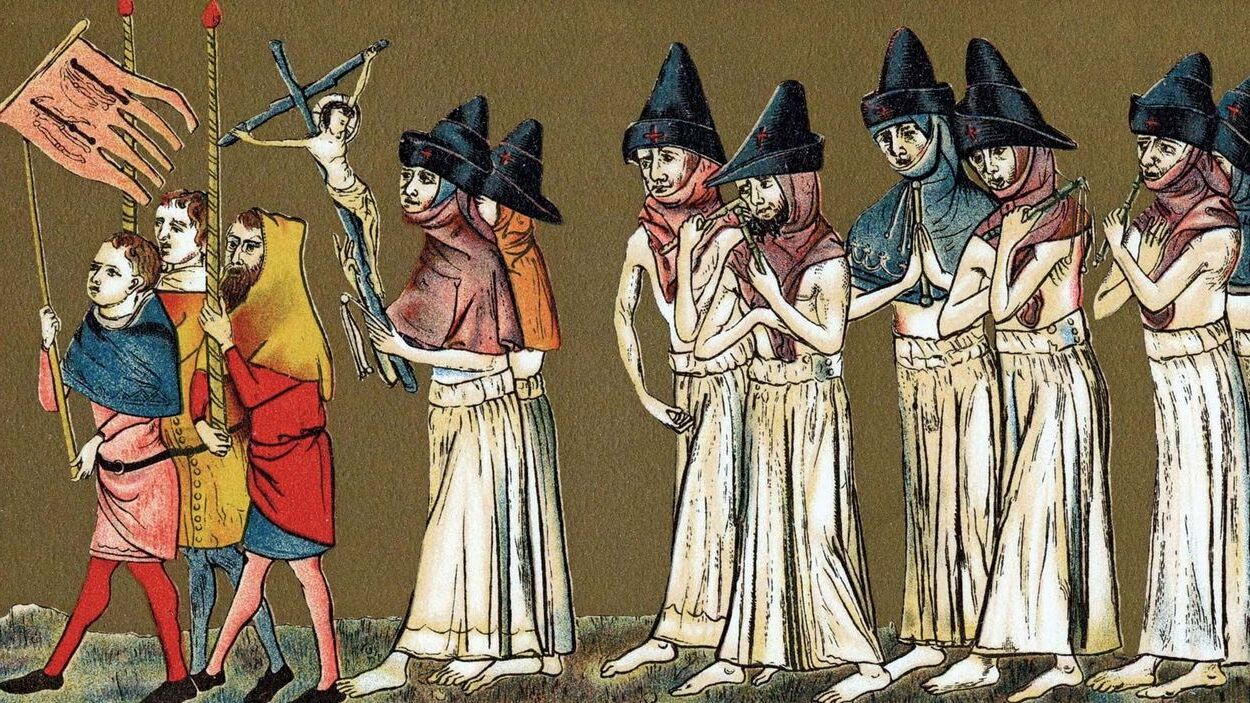
Ever wondered what caused the Black Death? This devastating pandemic swept through Europe in the 14th century, leaving a trail of destruction. The Black Death was caused by the bacterium Yersinia pestis, which spread through fleas on rats. This plague killed an estimated 25 million people, about one-third of Europe's population. Symptoms included fever, chills, vomiting, and swollen lymph nodes called buboes. The disease spread rapidly due to poor sanitation and crowded living conditions. Understanding the Black Death helps us appreciate the advancements in medicine and public health that prevent such catastrophes today. Ready to dive into more intriguing facts? Let's go!
The Black Death: A Historical Overview
The Black Death was one of the most devastating pandemics in human history. It swept through Europe in the 14th century, leaving a trail of death and despair. Here are some intriguing facts about this catastrophic event.
-
The Black Death occurred between 1347 and 1351, killing an estimated 25-30 million people in Europe.
-
The pandemic was caused by the bacterium Yersinia pestis, which is transmitted through fleas that lived on rats.
-
The disease had three forms: bubonic, septicemic, and pneumonic. Bubonic was the most common, characterized by swollen lymph nodes or "buboes."
-
Symptoms included fever, chills, vomiting, diarrhea, terrible aches, and pains, followed by the appearance of the buboes.
The Spread and Impact
The Black Death spread rapidly, affecting various aspects of society. Its impact was felt far and wide.
-
The plague likely originated in Asia, traveling along the Silk Road and reaching Europe via trading ships.
-
The first recorded case in Europe was in Messina, Sicily, where infected ships arrived from the Black Sea.
-
Cities were hit hardest due to their dense populations and poor sanitation, which facilitated the spread of the disease.
-
Entire villages were wiped out, with some areas losing up to 60% of their population.
-
The labor shortage caused by the high death toll led to economic upheaval, with wages rising and serfdom declining.
Social and Cultural Effects
The Black Death had profound social and cultural consequences, reshaping European society in many ways.
-
Fear and superstition grew, with many believing the plague was a punishment from God.
-
Anti-Semitic violence surged, with Jewish communities being falsely blamed for poisoning wells.
-
The pandemic led to the creation of the "Danse Macabre" or "Dance of Death" motif in art, symbolizing the universality of death.
-
The plague prompted improvements in public health and sanitation, as people sought to prevent future outbreaks.
Medical Responses and Misconceptions
Medical knowledge was limited during the Black Death, leading to various responses and misconceptions.
-
Physicians wore beaked masks filled with aromatic herbs, believing the plague was spread by "miasma" or bad air.
-
Treatments included bloodletting, boil-lancing, and the use of concoctions made from herbs and minerals.
-
Some people turned to flagellation, whipping themselves to atone for their sins and seek divine mercy.
-
Quarantine measures were introduced, with ships being isolated for 40 days before passengers could disembark.
Legacy of the Black Death
The Black Death left a lasting legacy, influencing many aspects of life and thought in Europe.
-
The pandemic contributed to the end of the feudal system, as labor became more valuable and peasants gained more rights.
-
It spurred advancements in medicine and public health, laying the groundwork for modern epidemiology.
-
The Black Death influenced literature, with works like Boccaccio's "The Decameron" reflecting the societal impact of the plague.
-
The memory of the Black Death persisted for centuries, shaping attitudes toward disease and mortality in Europe.
Reflecting on the Black Death
The Black Death was more than just a plague; it was a turning point in history. It reshaped societies, altered economies, and changed the course of medicine. The pandemic wiped out a significant portion of Europe's population, leading to labor shortages and shifts in social structures. It also spurred advancements in public health and sanitation practices. Understanding the Black Death helps us appreciate the resilience of humanity and the importance of medical progress. While it was a time of great suffering, it also paved the way for modern advancements. The lessons learned from this catastrophic event continue to inform our responses to health crises today. By studying the Black Death, we gain insights into the past and prepare for a better future.
Was this page helpful?
Our commitment to delivering trustworthy and engaging content is at the heart of what we do. Each fact on our site is contributed by real users like you, bringing a wealth of diverse insights and information. To ensure the highest standards of accuracy and reliability, our dedicated editors meticulously review each submission. This process guarantees that the facts we share are not only fascinating but also credible. Trust in our commitment to quality and authenticity as you explore and learn with us.


